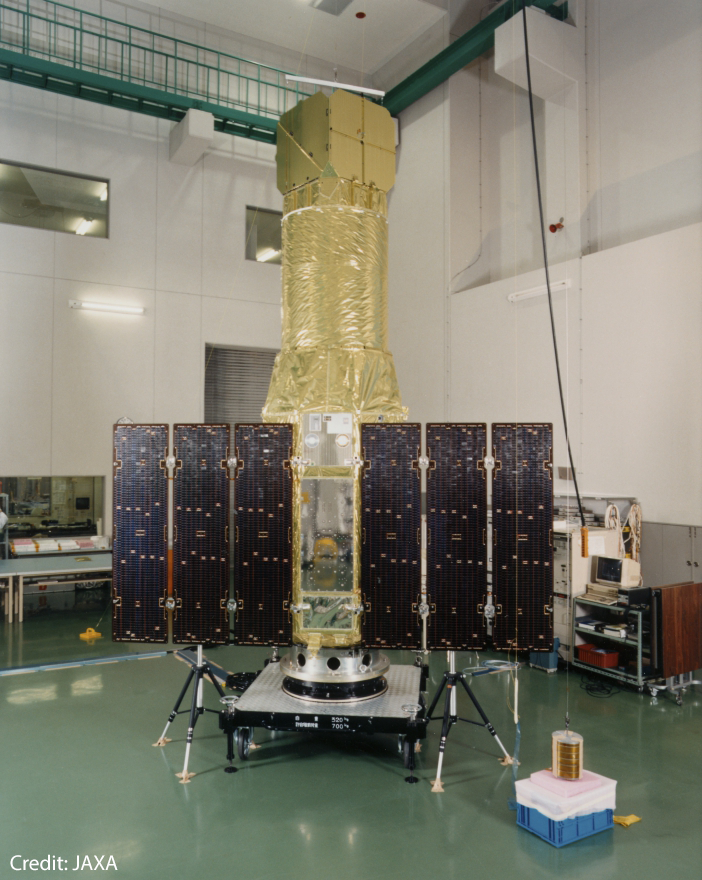
 Credit:JAXA; NASA
Credit:JAXA; NASA
The Launch of ASCA
ASCA, the Advanced Satellite for
Cosmology and Astrophysics, was launched 30 years ago. ASCA was the fourth Japanese cosmic X-ray astronomy
mission, and the second for which NASA provided part of the
science payload. The name ASCA suggest the word Asuka, an ancient
Japanese word for a flying bird. As shown in the picture above (when the integrated observatory was undergoing pre-launch testing), the
satellite with its long telescope housing and the extended solar panels do
look like certain birds. The ASCA observatory was a ground-breaking X-ray space observatory. ASCA was the first major X-ray observatory to use CCD detectors to both image X-rays from neutron stars, black holes, and other cosmic objects and also to record the distribution of X-ray energy from those objects. ASCA was also important because it demonstrated the use of economical, lightweight thin foil X-ray mirrors in a major X-ray space observatory (thin foil optics were first used on-orbit by the Broad-band X-ray Telescope which flew for 9 days on the Space Shuttle Columbia during the Astro-1 mission in 1990). ASCA produced ground-breaking science: ASCA measured
X-rays from matter plunging into black holes;
it discovered of "middleweight" black holes; it provided proof that supernova
remnants can produce cosmic rays; and measured the chemical
makeup of stars and galaxies. After eight productive years in orbit, ASCA
re-entered the atmosphere at 05:21 UT on March 2, 2001 over the western
Pacific. ASCA set the stage for more advanced Japanese X-ray observatories, notably Suzaku, which flew from 2005 to 2015, and the upcoming XRISM observatory, slated for launch later this year.
Published: February 27, 2023
<
HEA Dictionary ● Archive
● Search HEAPOW
● Other Languages
● HEAPOW on Facebook
● Download all Images
● Education ● HEAD
>

Each week the HEASARC
brings you new, exciting and beautiful images from X-ray and Gamma ray
astronomy. Check back each week and be sure to check out the HEAPOW archive!
Page Author: Dr. Michael F. Corcoran
Last modified Tuesday, 27-Feb-2024 10:13:21 EST


